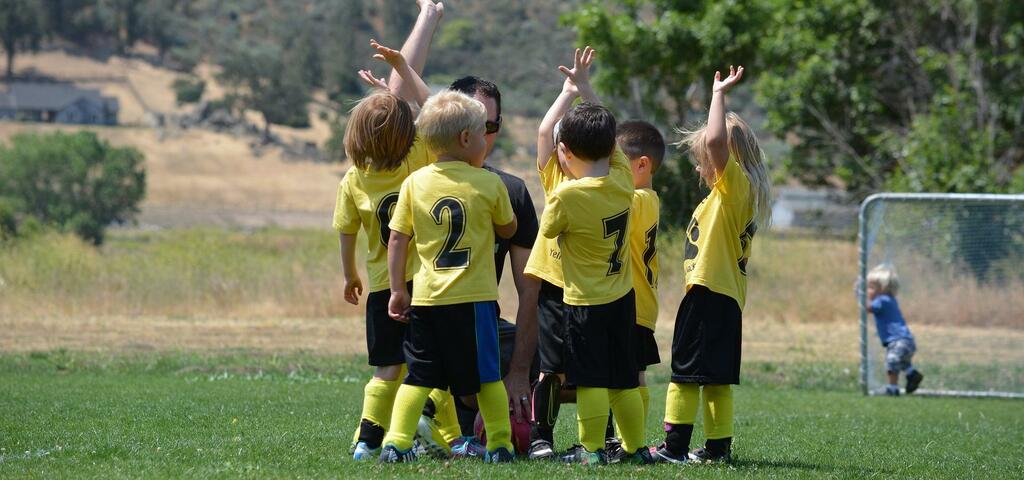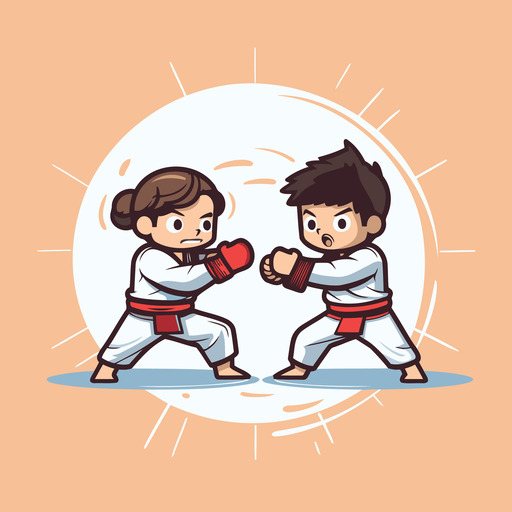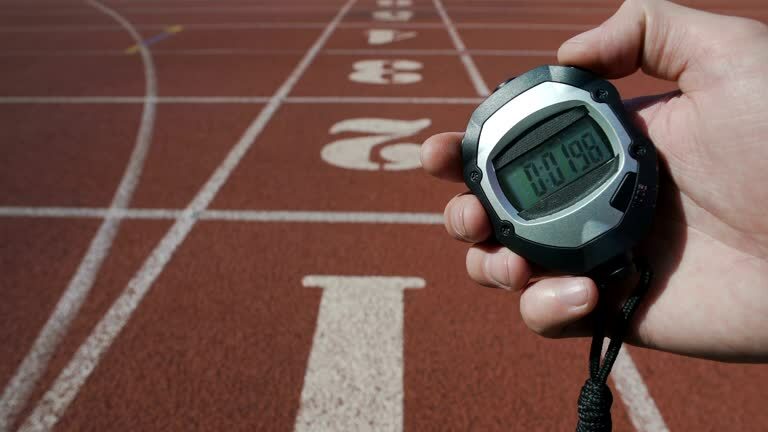
What age can we start sports for our children?
We get asked this question a lot from parents who want to get their kids started with some sport. Well, the answer depends on the type of sport, really. So, let us see some type of sports with the minimum recommended age for children.
Swimming
While you can start as early as 1-2 years old to learn swimming, however, it is only advisable in a one-on-one coaching scenario. It is best for the parent to be the first coach and to get their child to learn the basics of swimming at a young age. In a group coaching scenario under a coach, it is best to get started after the kid is at least 4 years old when it is able to follow instructions from a stranger.
Dance based fitness, Gymnastics, Fun games
Children will enjoy rhythmic movements with music and can start engaging from as early as about 3 years onwards. Simpler steps and movement to emphasize on coordination and balance is best to start with. Fun games emphasizing team work, fitness and simple rules are recommended to start with. This is a perfect introduction for the kids to pickup proper sports a bit later on.
Martial arts (Karate, Taekwondo, Kungfu) and Yoga
One can start martial arts practice at about 4 years onwards. It is a great way to gain strength, discipline, balance, coordination and flexibility. Hence they are great for all round physical and mental development of the child.
Skating
Skating is an excellent sport to develop balance, leg strength, coordination and flexibility. You can start as early as 4 years old with proper protection gear. It might be possible to start even a bit more earlier if the child is cooperating with the coach and is following instructions
Racket sports – Badminton, Tennis, Table tennis
To get started with racket sports, minimum of 5 years is recommended so that the child is able to fully grasp hand-eye coordination. You might want to start with junior rackets which are lighter, shorter and easier to handle. In the case of tennis, it is best to get started with softer balls which are slower in their bounce. In the case of table tennis, we suggest minimum 6-7 years so that the child has reached a comfortable height above the table.
Football & Athletics
Kids can start football and athletics training from as early as 5 years. Junior training equipment such as balls which are softer and slower is recommended to start with. Also the playing field is recommended to be smaller. Running is naturally suited for younger children than the other jumping and throwing events that make up the athletics full spectrum.
Basketball and Volleyball
These sports not only require greater hand-eye coordination, but also require the child to reach a minimum height even to get started with junior nets. It is best to start basketball or volleyball from the age of about 6 to 7 years old. However kids can be introduced to parts of the game like shooting a basket or dribbling or volleying the ball from 4-5 years onwards.
Chess
Chess requires some level of cognitive ability and focus. While we can introduce the elements and basic moves. Kids can start proper play from about 6 years onwards so they can appreciate the tactics of the game.
We hope the above guidelines help a bit. Of course, each child is different and can be an exception in its own right.
At CoachDirect we follow age based coaching plans for each sport. The various parameters in training can be gradually modified in terms of size of the playing field, playing equipment, complexity of rules, etc.. so that the kids gain confidence, fitness levels and also actually enjoy themselves when they are playing sports.

Which martial arts is suitable for children?
Practicing martial arts is a great way for children to build physical fitness, mental strength and personality development too. Here are a few of the most popular forms of martial arts you can introduce to your children as early as 4 years onwards.
Karate:
Karate uses kicks, punches, blocks etc for a full body contact. Even though it is quite an ancient sport, it has only recently been included as an Olympic sport. It has progressive movements called Katas which the student can practise and display. It is arguably still the most popular martial art form in the world.
Taekwondo
Taekwondo emphasizes more on fast kicking movements with a few punches. It is well known for the high kicks, multi kicks and round house kicks. The equivalent of Kata in Taekwondo is Poomsae. It has been an Olympic sport much before Karate found its place.
Kung Fu
Kung Fu is traditional Chinese style of fighting, which has actually many disciplines such as Wing Chun, Shaolin, Wushu, Tai Chi, and various animal styles. KungFu also uses many types of weapons and emphasizes fluid movements. The variety can sometimes be confusing and overwhelming. The iconic Bruce Lee originally practiced Wing Chun and combined with other western forms as kickboxing to create Jeet Kun Do.
Judo
Judo, another martial art form originally from Japan and also an Olympic sport, emphasizes gripping and grappling rather than striking. The focus is on balancing oneself and on throwing the opponent to the ground. Also locking key areas to force the opponent to tap out is another way to win the combat.
In summary all the above martial arts help develop strength, endurance, and flexibility, apart from discipline. Which one is most suitable in your case depends on your access to the best coaches and your personal interest.
At CoachDirect, we partner with local sports associations and offer martial arts coaching for popular forms such as Karate, Taekwondo, Kungfu, etc.. We offer regular assessments (belt exams) and tournament exposure to our trainees.

Well, how exactly does your sports coach plan his coaching session?
No matter which sport you play, there are certain basic building blocks for a coaching session that your coach is following. Let us see how they do it.
Warm ups: Warming the body and getting the player ready for the activity is key to avoid injuries and to get better performance in that activity. Typical general warmups include head to toe rotations to prep the various muscle groups, pumping up the heart beat in anticipation of the intensity that is going to follow, stretching the muscle groups where there is going to be push and pull involved, etc..
Fitness: Generally it is common practice to include some elements of physical fitness into your training and just before the coach plans to inculcate technical skills. This is generally the practice in grass root level and amateur level sport. Whereas in elite level coaching sessions, there tend to be different coaches focussing on the physical fitness and the technical skills elements. The coach may choose to focus on various aspects of fitness such as endurance, flexibility, agility, as per the coaching plan that she has prior prepared.
Technical drills: The actual skills required in the particular sport are practiced in a controlled setting as envisaged by the coach. The drills required to develop the skill is pre planned by the coach and the drills progress in increasing level of difficulty as the player is picking up the skill. Examples of controlling the setting could for example in the case of tennis is as follows. For kids beginning with tennis, the coach might prefer to use a ball with less pressure to help gain control of the shot and to reduce the ball so that the kid can reach easier. Similarly the court size could be made smaller so that the child has less ground to cover. Examples of increasing level of difficulty in drills could be for example, in the case of football be as follows. The trainee might first be just expected to carry the ball through some minimal obstacles and then progress to a zig zag pattern with more obstacles initially. And then later introduce one opponent defender and perhaps even two opponent defenders trying to snatch the ball away, as the player gains confidence. The coach shall plan different skills required and their progression drills as per his coaching plans.
Game play: The coach would give some time to practice the drills in an actual game setting. This mostly will not be a full match but rather controlled with limited time, space, number of players, complexity etc.. The focus here is to ensure that the players are using the right techniques that they have just learnt. The coach occasionally might also decide to give a full match day practice as the need arises, especially when the team is preparing for a tournament etc..
Cool down: It is important to bring the coaching session to an end with a proper cool down which includes stretching the various muscle groups to avoid buildup of lactic acid causing stiffness. Also it is an opportunity to let the heart rate and blood pressure slowly return to normal rate instead of a sudden stoppage.
Review or recap: The coach might choose to do a performance review of the player where she discusses what aspects the player is doing good versus where there is room for improvement. It is also a chance to talk about the other crucial elements for overall performance such as nutrition, sleep and mental strength of the athlete.
At CoachDirect, we follow structured coaching plans including the above basic building blocks to ensure our sessions are covering all important aspects and aid the players in improving their overall performance.

Physical fitness among children is often more than just being able to run faster than others in the class. Here are various forms of fitness and how to quickly measure the level of fitness among children.
BMI / Body Mass Index: This gives a quick check whether a child is underweight or overweight. It is calculated by dividing the weight (in kg) by the square of height (in m2). It gives a quick glance whether the child is in a healthy range or has tendency to be either obese or underweight. One should be careful to use the right BMI scale as guidance value since BMI for adults tend to be different from that of children or teens.
Hand-eye coordination: Reflex action could be different for different children. One simple measure of hand-eye coordination could be to check how many times a child is able to bounce a tennis ball against the floor within a given minute. Generally the coordination improves as the children grow from pre-school to primary to middle school.
Balancing: Maintaining body balance while indulging in sports is a crucial factor of physical fitness. One quick check to measure balance is to be able to do a flamingo test, or to check how many seconds the child is able to stand on one foot. Certain activities such as gymnastics or yoga can help in developing body balance.
Speed test: A 100m sprint is a classic test of speed which can be easily measured, and is universally accepted as a test of physical fitness. The whole world stands in awe everytime someone like Usain Bolt finishes the race in less than 10 seconds. However, for younger children, a 50m dash could be more appropriate. Agility is another variant which is similar to speed test, however here the emphasis is on how quickly the child is able to change direction of motion.
Flexibility: Basically flexibility means how far one can stretch oneself. A simple measure of core flexibility is to be able to sit on the floor with fully stretched legs and to be able to touch the toes without bending the knee. This is one factor which generally deteriorates as the children grow older. Certain activities such as practicing yoga and martial arts can greatly help in gaining flexibility.
Endurance: Or stamina as we might call it in layman terms is a measure of aerobic capacity of the child. Long distance running is an excellent test for endurance. However when there are time constraints and it is not feasible to conduct distance running, endurance can be effectively measured by simple exercises as number of jumping jacks or burpies performed in a set time.
Strength: Weightlifting is a simple measure of muscle strength. For school children number of pushups done can quickly indicate arm and core strength of the child. For girl students, one can adapt modified push ups where they can take knee support on the floor. Similarly squats is a quick measure of leg strength. Generally calisthenic exercises are excellent way to build strength without needing any equipment which is ideal in school environments.
At CoachDirect we conduct physical fitness assessments at schools so that parents can understand where their child stands against other children on the above factors. If the child wants to do well in sports then it goes without saying that the child should be good in each of the above factors as it can really differentiate the champ from the rest of the pack.

Let 2025 engage more students in sports & physical activities. Does your school follow the 3 tier strategy to enable more engagement?
Share your specific requirements so CoachDirect can work together with your school..